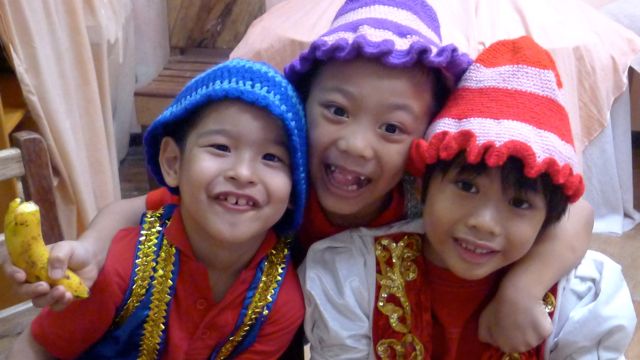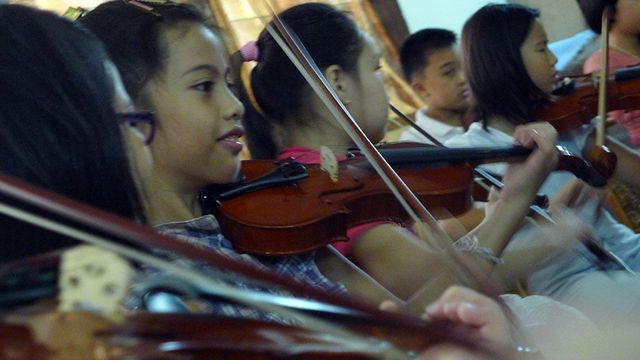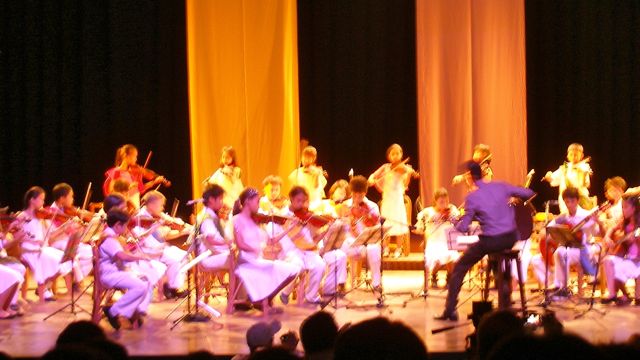SUMMARY
This is AI generated summarization, which may have errors. For context, always refer to the full article.

MANILA, Philippines – “In between heartbeats, there is a pause. During this pause, the heart is able to hear the messages from the body so that through the blood, the heart can send what the body needs.”
This is a portion of a teacher’s lecture as she explained to her students the workings of the human body’s circulatory system.
This teacher is Rhodela Virgina V. Garcia, grade 8 main teacher from Kolisko Waldorf School (KWS), a non-traditional school based in Quezon City. Garcia has been teaching in KWS for 4 years now and has found the experience deeply gratifying.
A lawyer by profession, she was led to Waldorf education by her incessant search for her true self.
The foundation of Waldorf education
Waldorf education (sometimes called Steiner education) is a pedagogical movement started by the philosopher Rudolf Steiner.
The first ever Waldorf school was established in Stuttgart in 1919. Today, there are over 1,000 Waldorf schools in 60 countries worldwide. Waldorf education is one of the most visible practical application of an anthroposophical view and understanding of the human being.
Cez Nunez, a board member at KWS and parent of a Waldorf student, explains that the anthroposophical view is actually “a way of seeing the human being as a being of body, soul and spirit.”
In Waldorf education, this is how children are seen and understood. That is why an important part of Waldorf education is the consideration of the child’s soul development.
This is one of the basic differences between the traditional curriculum and Waldorf education, according to Garcia. Waldorf teachers do not employ mere teaching strategies, but understand deeply that these methods address the children’s soul needs.
For instance, the story curriculum is appropriately themed for each grade level so that children of a particular age will receive the teachings that they need during that point in their human/spiritual development.

“Filipinizing” the European curriculum
As a young Waldorf school, KWS was established by ”parents who sought a unique and distinctive approach to educating children, aiming to enable each stage of growth to be fully and vividly enjoyed and experienced.”
Nunez adds that she “wanted a school that preserved the wonder and reverence in children.”
However, since Waldorf education has its roots in Europe, there is a need to adjust the curriculum to fit the Filipino experience. KWS is committed to this end. Nunez explains that “this (localization) is important because Filipino culture and values are so rich and, in their depth, become very good moral foundations.”
KWS was formed to provide a balanced approach to the modern school curriculum. “The academic, artistic and social aspects are treated as complementary facets of a single program of learning, allowing each to throw light on the others,” Nunez adds.
The Waldorf-schooled child
Garcia observes that Waldorf children “are more confident, very expressive and can carry themselves anywhere.”
These children see the world differently and have the ability to appreciate even the small things in their lives.
And because they are less exposed to mass media, they can create wonderful things using the time and natural resources that are available to them. They, too, live purposefully and have a great sense of responsibility.
In school, Waldorf children are taught age-appropriate lessons in art (first and foremost), music, carpentry, handwork (knitting, sewing), reading, nature study, writing, geography, movement, foreign languages and, of course, the core subjects like Math and Science.
All of these, in a more creative manner such that concepts are not merely dished out to students but presented as “living” lessons that will make enough impact to be remembered for a very long time.

Rudolf Steiner believed that schools should cater to the needs of the child rather than the demands of the government or economics, so he developed schools that encourage creativity and free-thinking.
Kolisko Waldorf School tries to live up to these ideals by providing its students with a balanced education, recognizing the individuality of each child and allowing these children to go into the world with confidence. – Rappler.com
Add a comment
How does this make you feel?
There are no comments yet. Add your comment to start the conversation.